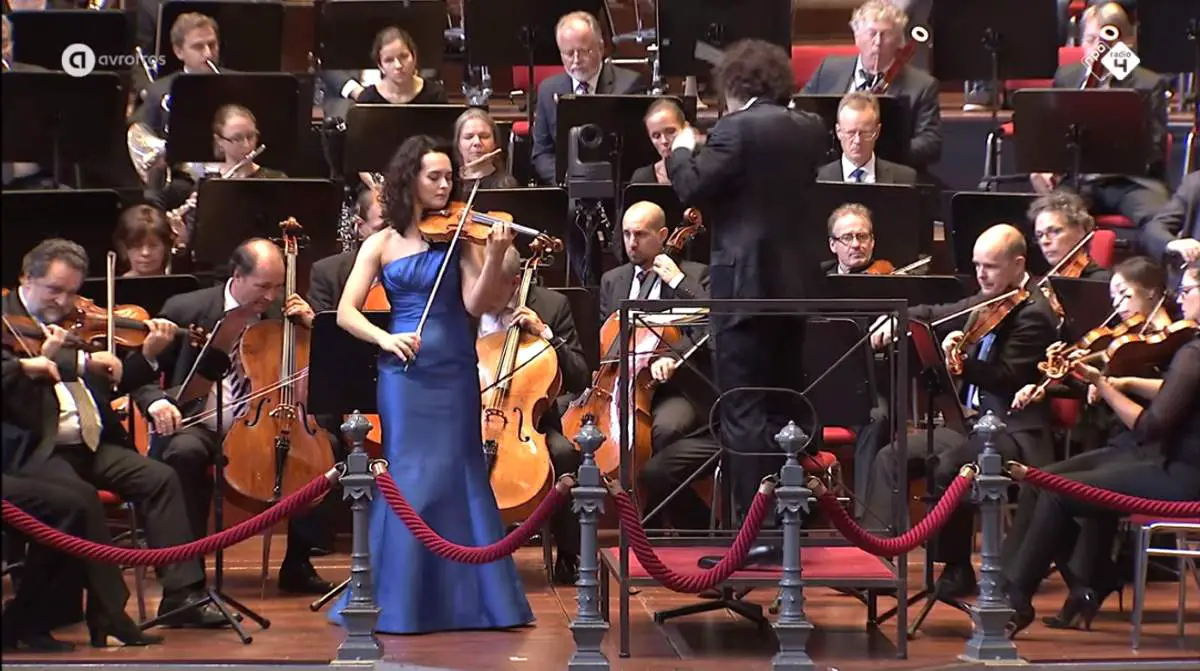Conducted by Lorenzo Viotti, the Netherlands Philharmonic Orchestra performs Pyotr Ilyich Tchaikovsky‘s symphonic poem The Tempest, Symphonic Fantasia after Shakespeare, Op. 18. Recorded during an AVROTROS Friday concert on October 20, 2023, at the Tivoli Vredenburg in Utrecht.
Tchaikovsky’s “The Tempest”
Tchaikovsky’s “The Tempest,” Op. 18, is a symphonic fantasia composed in 1873, and it stands as one of his most vivid orchestral works. Inspired by Shakespeare’s play of the same name, this piece is a programmatic work, which means it’s designed to tell a story or evoke specific ideas through music. Tchaikovsky was deeply influenced by Shakespeare throughout his career, with “The Tempest” being the second of his three Shakespeare-based compositions, flanked by the “Romeo and Juliet” overture and the “Hamlet” overture-fantasy.
In “The Tempest,” Tchaikovsky endeavored to capture the essence of the play’s narrative: the magical island, the story of love and betrayal, and the character of Prospero wielding his sorcerous power over the elements and the fate of the island’s inhabitants. The music is constructed to follow the drama of the play, opening with a portrayal of the calm sea that soon gives way to the storm conjured by Prospero’s magic. This tempest is depicted through Tchaikovsky’s masterful orchestration, creating a sense of turmoil and chaos that eventually subsides as the storm abates.
Following the depiction of the storm, the music transitions into themes representing Prospero, the enchanting island itself, and the love story between Prospero’s daughter, Miranda, and Ferdinand, son of the King of Naples. The love theme is particularly notable for its lush harmonies and tender melody, a hallmark of Tchaikovsky’s capacity for lyricism.
As the fantasia progresses, the themes interact and develop, mirroring the complexities and interactions of the characters in the play. Tchaikovsky uses the orchestra to explore a wide range of colors and textures, from the menacing portrayal of the tempest to the gentle, romantic passages that follow.
The work concludes with a sense of resolution and calm, as Prospero renounces his magic, and the piece fades away, much like the play itself, into a serene and contemplative ending. This composition, though not as frequently performed as some of Tchaikovsky’s other orchestral works, is a testament to his ability to translate dramatic narratives into compelling musical language.
Shakespeare’s “The Tempest”
Shakespeare’s “The Tempest” is a play about magic, power, and reconciliation, set on a remote and mystical island. The story begins with a storm -the tempest- created by the sorcerer Prospero, who was once the Duke of Milan. Years before the play begins, he was usurped by his brother Antonio and cast away to sea with his young daughter Miranda. They find themselves on an island where Prospero harnesses the powers of magic and commands spirits, the chief among them being Ariel.
The tempest Prospero conjures causes a ship carrying his treacherous brother, along with other nobles, including the King of Naples and his son Ferdinand, to wreck upon the island’s shore. While Prospero seeks to enact his revenge, the play explores themes of forgiveness and redemption. The king’s son, Ferdinand, and Miranda fall in love, providing a narrative of new beginnings and the uniting of former enemies.
Throughout the play, Prospero navigates complex relationships with the island’s other inhabitants: the spirit Ariel, whom he promises to free from servitude, and Caliban, a resentful creature who considers the island his birthright.
“The Tempest” is considered by many to be one of Shakespeare’s most lyrical plays, integrating themes of nature, civilization, and the supernatural. In the end, Prospero forgives his adversaries and renounces his magical powers, seeking a return to a life of peace and order. The play concludes with Prospero’s epilogue, which breaks the fourth wall as he addresses the audience directly, asking for applause to release him from the play, as he has released his servants from their duties.
Sources
- The Tempest (Tchaikovsky) on Wikipedia

